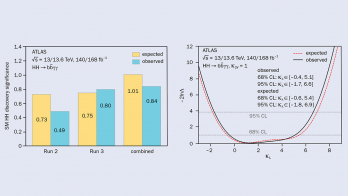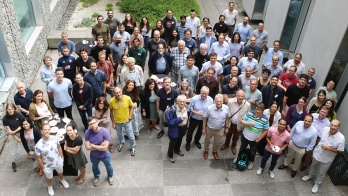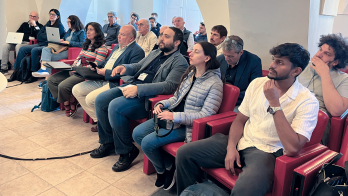
EPS-HEP 2011
In this issue, news from the LHC experiments focuses on a few highlights at the first big summer conference.
A wealth of physics results from ATLAS emerged at EPS-HEP 2011, ranging from detailed measurements of strong and electroweak processes to a spectrum of searches for new physical processes using the full 2011 dataset collected up until the end of June, and comprising up to 1.2 fb–1 of analysed data. As with the Higgs searches, constraints on other new processes now probe mass ranges that have substantially increased with respect to 2010 data alone, but no evidence has yet appeared for physics beyond the Standard Model. Several measurements also benefited by including the 2011 data, such as measurements of the cross-section for the production of pairs of top quarks with a precision of 8%, and a more than 7σ observation of electroweak production of single top quarks.
The collected integrated luminosity has now brought processes involving the dibosons WW, WZ and ZZ under the microscope at ATLAS. Diboson production at the LHC is of great interest because it tests the fundamental gauge structure of the Standard Model. The production of the pairs involves boson self-couplings that are precisely predicted by the Standard Model, so any deviation from the expected values would be an indication of new physics.
Of the three dibosons, the production of ZZ pairs is particularly rare. The Z bosons were observed in ATLAS via their decays to electrons or muons, giving a very clean signature of four isolated leptons with high transverse momentum. Electrons were identified from a cluster in the fine-granularity ATLAS electromagnetic calorimeter, muons from a track in the muon spectrometer, in each case matched to a track measured in the high-precision inner detector. In events with four leptons, pairs of oppositely charged electrons or muons were combined to form Z candidates.
The figure shows a plot of the mass of one electron or muon pair against the mass of the second pair. The ZZ signal is clearly seen as a cluster of events around the Z boson mass, 91 GeV, for both pairs. ATLAS thus sees 12 events that are consistent with ZZ production, with an expected background of 0.3 events, and measures a cross-section of 8.4+2.7–2.4 pb compared with the Standard Model prediction of 6.5 pb.
ATLAS has also measured cross-sections for WW and WZ production, again using leptonic final states. All values are in agreement with Standard Model expectations, and the WZ and ZZ measurements have been used to constrain gauge boson self-couplings. These constraints are comparable with, and in some cases tighter than, those from measurements at the Large Electron–Positron collider at CERN and at Fermilab’s Tevatron.
Further reading
ATLAS collaboration 2011 ATLAS-CONF-2011-099 (WZ).
ATLAS collaboration 2011 ATLAS-CONF-2011-107 (ZZ).
ATLAS collaboration 2011 ATLAS-CONF-2011-110 (WW).







